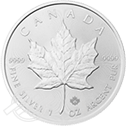The U.S. Economy Is Weaker Than You Think

Over twelve years ago Wall Street was rocked by an unprecedented crisis … and the U.S. economy still hasn’t been able to fully recover since then.
September 2008 ushered in the dramatic Fannie Mae and Freddie Mac takeover, the Lehman Brothers bankruptcy, the AIG bailout, and ended with the introduction of massive government legislation to buy “toxic” mortgage debt. The ensuing global financial crisis took its toll on economies around the world and the U.S. and global economy are still scuffling to climb back to pre-crisis growth levels.
Since the collapse, central banks around the world have implemented previously unheard-of monetary strategies in their efforts to shore up global economies. Unconventional methods of quantitative easing, money printing, and interest rate schemes aimed at restoring financial health caused the Federal Reserve’s balance sheet to balloon from $850 billion prior to the financial crisis to over $4 trillion at one point.
But, have these measures worked? Well, the stock markets are trading near all-time highs, but what about the economy? Many economic indicators are still showing significant signs of weakness.
Despite the U.S. federal funds rate being at a record low between zero to 0.25% for over a decade, the U.S. economy has not dramatically responded to this unprecedented policy. Economic growth has stumbled slowly forward in a below average recovery with gross domestic product (GDP) growth in the 2.2-2.4% range in recent years. That pace of growth is well below the average or previous “trend” growth of about a 3.5% pace.
Federal Reserve officials have loudly broadcast their intentions to continue “normalizing” monetary policy this year. A historically more normal federal funds rate (the Fed’s short-term interest rate and policy-setting tool) is around 3.0-3.5% versus the current level. Many feel the terminal rate could exceed 5.25% this year before finally coming back down sometime next year.
While most market watchers have been bracing for more interest rate hikes this year, could weaker-than-expected economic conditions derail the Federal Reserve’s plans?
One major investment bank is even warning that the Fed might have to loosen monetary policy conditions again — an event that could be extremely bullish for precious metals.
Are The Fed’s Hands Tied?
A recent patch of softer-than-expected economic numbers shows lackluster growth in the final quarter of 2022. Consumers are saving more than expected while spending less, wage growth remains lower than necessary to keep up with inflation (when was the last time you got a raise?) and businesses aren’t investing in growth and business development. Economists estimate that first-quarter GDP growth could show only a small pace of growth.
Another economic indicator that is flashing warning signals about the internal health of the U.S. economy is deteriorating credit conditions. The National Association of Credit Management’s Credit Management Index could be pointing to trouble ahead in 2023, according to the NACM.
Major investment bank UBS pointed to this data as a major signal that the Federal Reserve may actually need to loosen monetary policy again rather than tighten — in an attempt to support the still ailing U.S. economy, which could create conditions for another bull run in gold.
Right now gold is low relative to where it has been while stocks are approaching record levels. Basic investment principles of selling high and buying low would indicate a good time to rotate some assets from one investment to the other. Gold is a time-honored investment vehicle that allows investors to preserve and build wealth and at current price levels it certainly appears to be a bargain.
Gold is trading around $1,870 per ounce right now, well off its record highs of over $2,000. The U.S. stock market continues to take a breather from nose-bleed record high territory supported by little other than the manipulations by the Federal Reserve. The current bull run in stocks is poised for a crash as the underlying fundamental economic picture doesn’t support a continuing rise in share prices.
Buy Low, Sell High
As you consider saving for retirement, now is the time to lock in protection. Investors can look to sell stocks when they are high and vulnerable to a fall, and purchase gold while it is still at levels significantly below the highs.
Now is the time to protect and build your financial assets. Advantage Gold focuses on empowering and educating investors and we pledge to help you make informed financial decisions that will help you secure the type of retirement you have always dreamed about.
Please reach out to our experienced precious metals executives with any questions that you might have about investing in gold and the process of setting up a Gold IRA.
Talk to an IRA advisor about how to roll over your 401(k) into a Gold IRA by opening a self-directed IRA account, contact us or call us at 800-341-8584 today.



